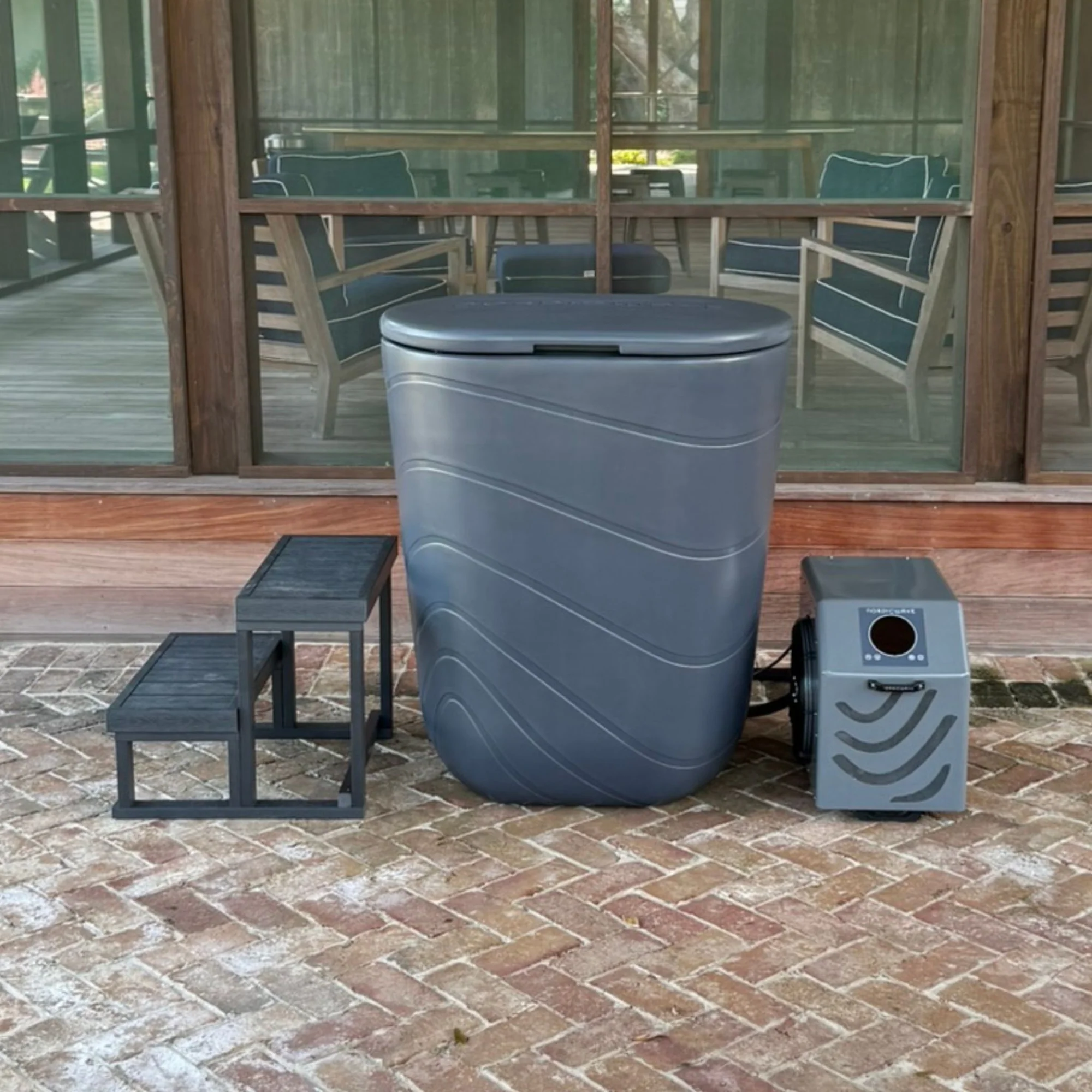If you’ve ever looked into cold therapy—whether for recovery, mental resilience, or wellness—you’ve probably come across two terms used almost interchangeably: ice bath and cold plunge. But are they the same thing?
Short answer: Not quite.
Long answer: The difference lies in how the water gets cold, not just what the tub looks like.
Let’s dive into the details so you can decide which is right for your needs.
What Is an Ice Bath?
Traditionally, an ice bath refers to a tub, barrel, or container filled manually with cold water and ice. You physically add ice to cool the water to your desired temperature—usually anywhere from 5°C to 15°C (41°F to 59°F). These setups can be anything from a stock tank to an inflatable pod.
Why People Choose Ice Baths:
- Affordability: These are generally much less expensive than systems with chillers.
- Simplicity: No power required, no digital parts—just water and ice.
- Portability: Many are lightweight and easy to move or deflate.
- Beginner-Friendly: A good entry point for those new to cold therapy.
Downsides:
- Labor-Intensive: You’ll need to buy or make ice frequently, which can get expensive or inconvenient.
- Inconsistent Temperature: Hard to keep water consistently cold, especially in warm climates.
- Shorter Sessions: Without insulation or filtration, water warms up quickly and can get dirty fast.
What Is a Cold Plunge?
A cold plunge refers to a system with a chiller unit—either integrated or external—that cools and circulates the water to a precise temperature. These setups maintain a constant cold environment without needing ice.
They come in many forms: tubs, pods, and even upright barrels, but the defining feature is the automated temperature control.
Why People Choose Cold Plunges:
- Precision: Set your exact temperature, often down to 3°C (37°F).
- Consistency: Water stays cold 24/7 without the need for daily prep.
- Convenience: No hauling ice or draining water each day.
- Cleanliness: Many include filtration and sanitation systems, meaning less water waste and better hygiene.
Downsides:
- Cost: You’re paying for technology, materials, and long-term durability.
- Power Requirements: Needs electricity and sometimes minor maintenance.
- Space: These units are heavier and may require a dedicated space indoors or outdoors.
What About Barrels With a Chiller?
Here’s where things get interesting: Some barrel-style tubs now come equipped with chillers, combining the vertical immersion experience with plunge-level performance.
These include options like:
- IceBarrel with Chiller (seated, upright, fiberglass or stainless steel)
- Nordic Wave Viking (thermowood barrel with chiller and filtration)
This makes them more expensive—but for good reason:
- They offer a minimal footprint (great for small spaces)
- Provide full-body immersion in a seated/upright position (comfortable for many)
- Often feature premium materials like stainless steel or treated wood
- Deliver the same automated chilling you'd expect from a high-end plunge tub
So... Ice Bath vs. Cold Plunge?
Here’s a simple rule of thumb:
| If it requires ice to get cold, it’s an ice bath. |
| If it has a chiller that keeps water cold on its own, it’s a cold plunge. |
Don't let shape or branding confuse you—focus on how the water is cooled.
Which One Should You Choose?
Ask yourself:
Are you just getting started? Start with a manual ice bath. It’s affordable and helps you build the habit.
Do you want to plunge daily without hassle? Go for a cold plunge with a chiller — you’ll save time, water, and effort.
Do you have limited space or want to sit upright? Look for a barrel-style tub with a chiller—compact and immersive.
Want to travel or move it around? Inflatable or portable ice baths are your best bet.
Final Thoughts
The cold therapy world is evolving fast. What used to be a bin of ice water is now a sleek, smart, and therapeutic setup with options to suit every lifestyle and budget.
Whatever you choose, the most important step is getting in—and making cold exposure a consistent, empowering part of your wellness routine.


